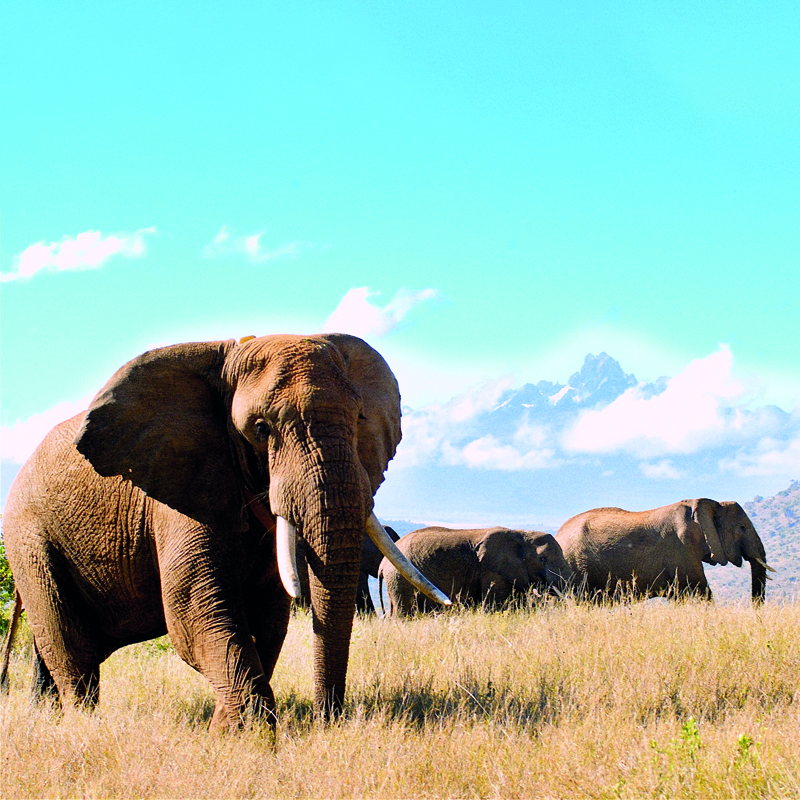A new Review paper discusses the ways in which AI can help enhance elephant monitoring and improve conservation.

The explosion in Artificial Intelligence (AI) techniques and tools is having an impact on nearly every aspect of society, including conservation. A new J. R. Soc. Interface Review sheds light on what AI could mean for the future of elephant monitoring. We spoke to two of the authors, Dr Leandra Brickson and Professor Fritz Vollrath, to find out more.
Please can you introduce your Review and explain why this is an important topic?
In this Review, we delve into the innovative ways Artificial Intelligence (AI) is transforming elephant conservation by enhancing monitoring techniques. You cannot conserve what you cannot measure, and therefore monitoring is the first step to conservation and management. The common use of visual monitoring through images and videos is well-known, yet the potential of audio, seismic, and olfactory techniques is vast and holds promise for future advancements. This Review also addresses the challenge of differentiating between the exaggerated expectations often associated with AI which have been fuelled by extensive hype, and its genuinely beneficial and practical applications in the realm of conservation.
How can researchers in this field encourage collaboration between AI specialists, technologists and conservation scientists?
Open lines of communication are crucial; AI experts require feedback to understand which questions or challenges are most pertinent to enhancing conservation outcomes. Given their distance from the field, the next logical steps for conservation may not always be apparent to AI specialists. Additionally, AI is known to work best in constrained and repeated situations, which are more difficult to apply to situations in the wild. To foster collaboration, conservationists can articulate clear objectives for what they aim to detect or measure, and AI specialists should immerse themselves in the unique challenges of conservation science, acknowledging the time-consuming nature of data collection in the wild and the inherent variability in each situation.
Can you comment on any socioeconomic or ethical implications of utilizing AI to enhance elephant conservation?
Machine Learning (ML) and AI, essentially sophisticated forms of statistics, enable the analysis of complex, diverse datasets. As data collection tools evolve and are becoming more fine-grained, the need for advanced analytics grows rapidly. While this technological progression doesn’t inherently raise ethical concerns, it is imperative to reflect on the broader picture. Humans have inflicted significant harm on elephants, from hunting to habitat destruction and escalating human-elephant conflicts. The integration of ML and AI in data analysis, paired with novel data acquisition tools, offers a beacon of hope, potentially reversing some of the damage and aiding in the conservation and management of elephant populations worldwide.
What is next for this field?
Looking ahead, the future of animal tracking in conservation hinges on energy efficiency. Developing tools and equipment that integrate data acquisition and analysis holds the key to optimizing energy use, preserving battery power, and enhancing overall efficiency. Imagine smart sensors that monitor continuously but only record and analyse data, on-site when necessary. This approach not only optimizes data transfer energy costs but also reduces the wear on batteries, a critical concern for devices like elephant collars. Beyond reporting on the status of an animal, whether injured, dead, or stressed, future smart monitors could interpret individual behaviour and decision-making processes, potentially predicting events like farm raids well in advance. The miniaturization of tracking devices, possibly to the size of an elephant’s tick, stands as a promising development, eliminating the need for collaring and its associated stresses and dangers.
Image caption: For more than two decades, Mountain Bull travelled long distances between Mt Kenya (pictured) and the north, cleverly avoiding humans, in his search for females. Before he was killed in 2014, his GPS tracking collar allowed the analysis of his movements. Had modern sensing technologies, as outlined in this paper, combined with advanced analytical techniques, been available in those days, they might have prevented him from falling prey to poachers. Photo: Saba Douglas-Hamilton/Save the Elephants.
To find out more about the interdisciplinary work we publish or submit to us, take a look at Journal of the Royal Society Interface.





